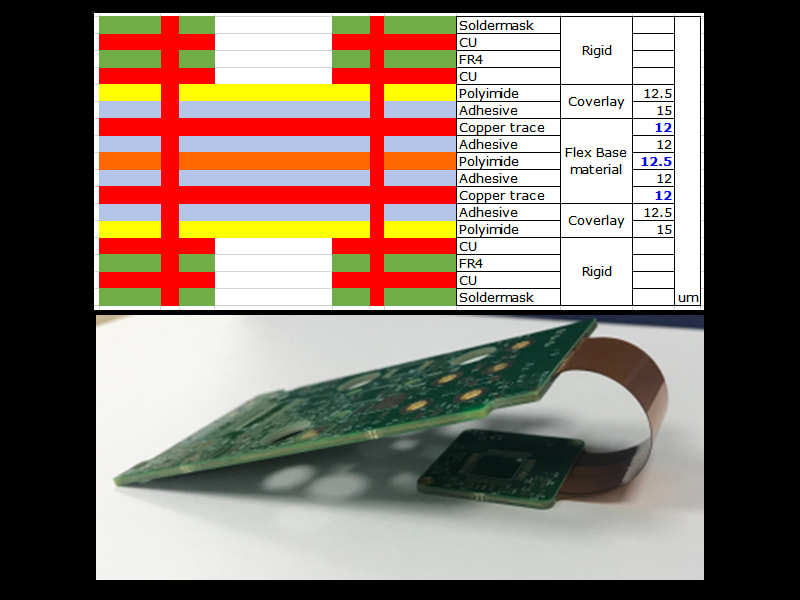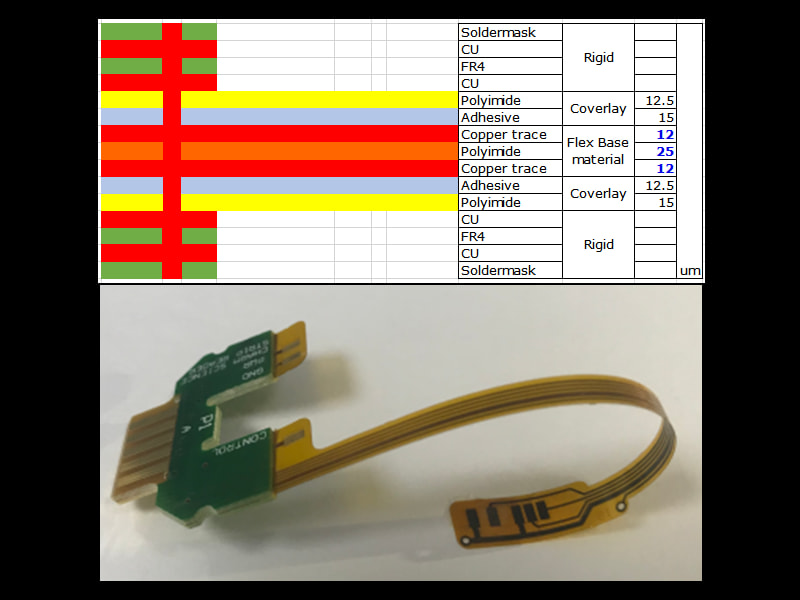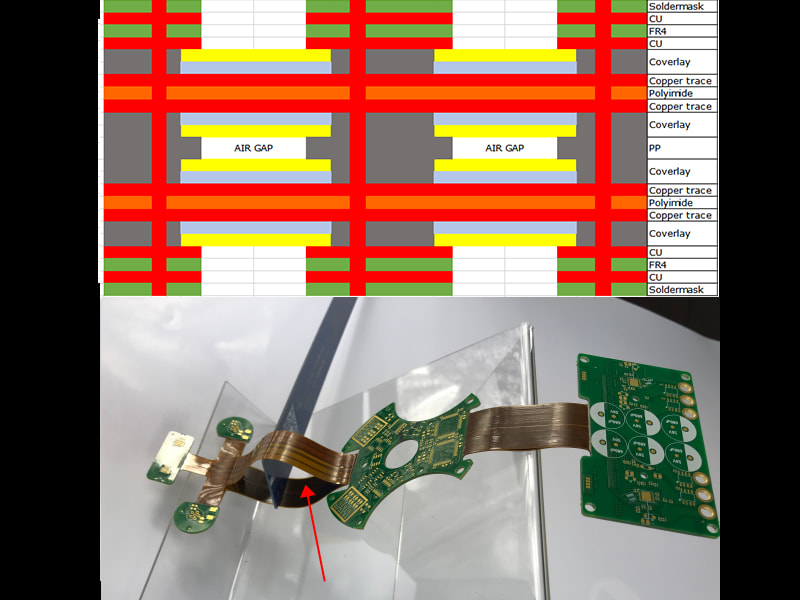Normally the rigid-flex PCB need to use in a small space area, and the flex area needs to be bent repeatedly or better bend radius. So many customers are concerned about the bending effect of the flex area, do you know how to improve the bend effect when you design? Here are a few suggestions for your reference.
The first one, the thickness of flex PCB board. The thinner the board, the better the flexibility. Such as below 6 layers stack up with 2 layers flex, we can used 1/3 oz copper instead of 1/2oz or 1oz, and 1/2mil PI instead of 1mil PI, then total thickness will be around 0.1mm.

The second one, adhesiveless material instead of adhesive material. The adhesive in base material will also affect the flexibility. Such as below stack up of flex part, there is no adhesive between Copper and Polyimide, but the coverlay must be glued and then laminated.

The third one, design a loose leaf (air gap) for flex area. Loose leaf can reduce the total thickness of flex part, especially for multilayer flex circuits in rigid-flex PCB design. Such as below sample pictures, no matter 2 layers or 4 layers in flex part, many customers will add one air gap. If you think the flexibility is not very good when we add one air gap, it’s okay to add two or more air gaps for multilayer flex PCB.

If you would like to know more details, please send your questions to our email sales@www.bestfpcs.com










 2023-03-17
2023-03-17
 BEST
BEST

.png)
.png)
.png)
.png)

.png)

